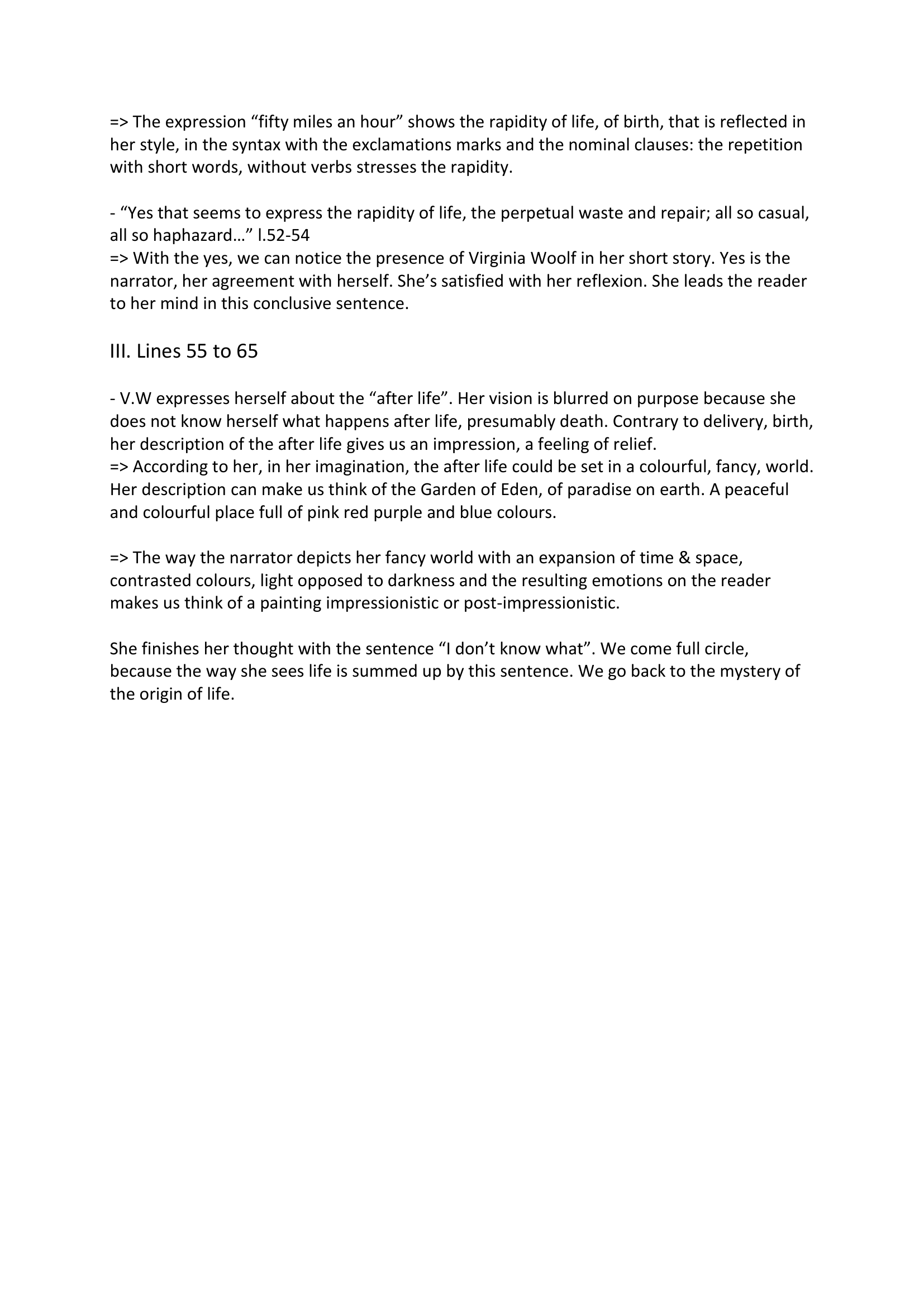The mark on the wall. Part I. (line 16 to 65) - Anglais
Publié le 19/02/2012

Extrait du document
I. Lines 16 to 33
In this part, we follow the narrator’s introductory remarks about the mental process of her imagination at work: the importance of the eye contact with a new object which works like a prompt, triggering off a quick chain of thoughts.
- She starts with a metaphor “How readily our thoughts swarn upon a new object, lifting it a little way, as ants carry a blade of straw so feverishly, and then leave it…” (l.16-17)
=> Hard-working ants represent her thoughts at work. The blade of straw they are carrying are objects her eyes focus on, as she explained before. The profusion of her thoughts is expressed with words like “swarm” and “feverishly”.
«
=> The expression “fifty miles an hour” shows the rapidity of life, of birth, that is reflected in
her style, in the syntax with the exclamations marks and the nominal clauses: the repetition
with short words, without verbs stresses the rapidity.
- “Yes that seems to express the rapidity of life , the perpetual waste and repair; all so casual,
all so haphazard…” l.52 -54
=> With the yes, we can notice the presence of Virginia Woolf in her short story.
Yes is the
narrator, her agreement with herself.
She’s satisfied with her reflexion.
She leads the reader
to her mind in this conclusive sentence.
III.
Lines 55 to 65
- V.W expresses herself about the “after life”.
Her vision is blurred on purpose because she
does not know herself what h appens after life, presumably death.
Contrary to delivery, birth,
her description of the after life gives us an impression, a feeling of relief.
=> According to her, in her imagination , the after life could be set in a colourful, fancy, world.
Her descrip tion can make us think of the Garden of Eden, of paradise on earth.
A peaceful
and colourful place full of pink red purple and blue colours.
=> The way the narrator depicts her fancy world with an expansion of time & space,
contrasted colours, light oppo sed to darkness and the resulting emotions on the reader
makes us think of a painting impressionistic or post -impressionistic.
She finishes her thought with the sentence “I don’t know what”.
We come full circle,
because the way she sees life is summed up by this sentence.
We go back to the mystery of
the origin of life..
»
↓↓↓ APERÇU DU DOCUMENT ↓↓↓
Liens utiles
- The mark on the wall. Part I. (line 16 to 65)
- exposé anglais introduction to the Consumer Society
- Fiche de lecture sur le chapitre 11: The Greek of the New Testament, par Mark Janse, sur la section IV de l’ouvrage, intitulé: Ancient Greek: structure and change, pages 646-653.
- LE DISCOURS D’UN ROIFrançais Anglais In the first instance, i’m going to recapitulate the movie for those of you who don’t know.
- AVENTURES D'HUGKLEBERRY FINN (Les) [The Adventures of Huckleberry Finn], Mark Twain















